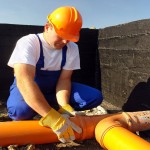When caring for minor wounds, managing injections, or preparing for at-home medical procedures, maintaining a clean environment is crucial to prevent infections. Many people overlook the importance of effective skin preparation, which can lead to unnecessary complications and delayed healing. Searching for reliable solutions, many individuals turn to Skin Prep Pads as a practical tool for safe and hygienic home care.
Why Proper Skin Preparation Matters
The skin acts as the body’s first line of defense against bacteria and other harmful microorganisms. Even minor breaks, such as small cuts or punctures, can become entry points for infection if not properly cleaned. Using skin prep pads before procedures like injections or wound care helps eliminate surface germs and reduces the risk of introducing bacteria into the body.
Proper skin preparation also ensures that medical adhesives, such as bandages or tapes, adhere better and stay in place. This not only improves the effectiveness of the treatment but also minimizes irritation and discomfort.
Essential Steps for Safe At-Home Care
To maximize the benefits of skin prep pads and minimize infection risks, follow these key steps:
1. Gather Your Supplies
Before beginning any at-home medical care, make sure you have all necessary materials at hand:
- Skin prep pads
- Sterile gloves (if needed)
- Clean bandages or dressings
- Medical tape or adhesive strips
- Waste disposal bag
Having everything nearby reduces the risk of contamination and ensures a smooth, uninterrupted process.
2. Wash Your Hands
Hand hygiene is the foundation of infection prevention. Always wash your hands thoroughly with soap and water for at least 20 seconds before handling any medical supplies or touching the treatment area. If soap and water are unavailable, use an alcohol-based hand sanitizer.
3. Prepare the Area
Choose a clean, well-lit space for your procedure. Disinfect any surfaces that will come into contact with supplies or the treated area. This extra step further reduces the risk of introducing germs.
4. Cleanse the Skin
Open a skin prep pad and gently wipe the area in a circular motion, starting at the center and moving outward. Allow the skin to air dry completely before proceeding. This method ensures that bacteria are effectively removed and that the area is ready for further care.
5. Proceed with Treatment
Once the skin is clean and dry, continue with the necessary procedure—whether it’s applying a bandage, administering an injection, or dressing a wound. Avoid touching the cleaned area with unwashed hands or non-sterile items.
6. Dispose of Used Materials Properly
Immediately discard used skin prep pads and other disposable items in a secure waste bag. Proper disposal prevents cross-contamination and keeps your environment safe for future care.
Tips for Optimal Results
- Use a new skin prep pad for each application to maintain sterility.
- Store pads in a cool, dry place to preserve their effectiveness.
- Never reuse pads or touch the pad’s surface before application.
- Monitor the treated area for signs of infection, such as redness, swelling, or warmth, and seek medical advice if needed.
By following these essential steps and using skin prep pads as part of your at-home care routine, you can significantly reduce the risk of infections and promote faster healing. Prioritizing cleanliness and preparation not only safeguards your health but also gives you peace of mind when managing minor medical needs at home.






